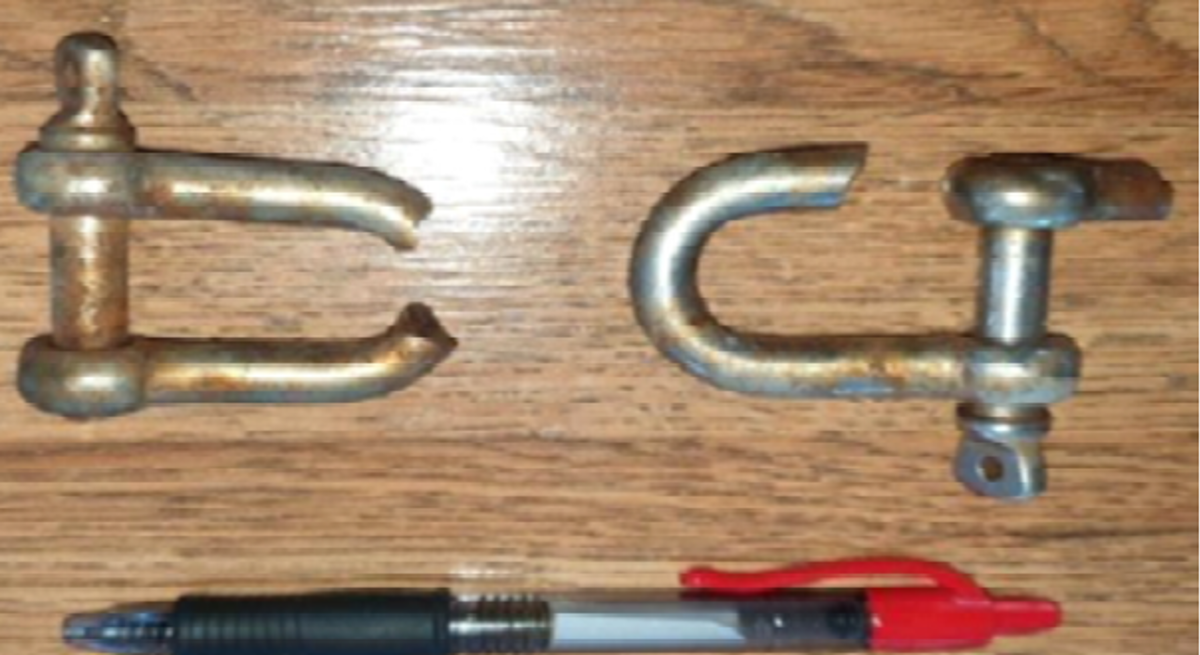Failed shackle on vessel life raft
- Safety Flash
- Published on 17 December 2019
- Generated on 28 December 2025
- IMCA SF 30/19
- 2 minute read
Jump to:
There was a failure of two stainless steel “D” shackles forming part of a life raft hydrostatic release assembly on a vessel.
What happened?
The failure was discovered whilst the vessel was in the 500m safety zone of an installation.
A crew member noticed one of the vessel’s starboard life raft containers was in the water. The life raft was still attached to the vessel via the painter (rope).
The crew member immediately notified the bridge team who stopped all non-essential operations and informed the installation.
The vessel deck crew attempted to recover the life raft intact by using the painter; however, the life raft inflated. The inflated life raft was secured to the side of the vessel which then departed the 500m safety zone and safely recovered the life raft to deck.

What went wrong?
The failed/parted shackles released the strap securing the life raft container to its stand.
As a result, the life raft container fell into the water but remained connected to the vessel via the painter.
The life raft inflated (as expected) when tension was applied to the painter.
The shackles potentially failed due to crevice corrosion over time.
What actions were taken?
- Appropriate authorities were informed, and arrangements were made to replace the inflated life raft.
- All remaining life raft stainless steel shackles were replaced.
- Inspections were carried out to identify vessel equipment with potential for crevice corrosion and galvanic corrosion.
- Weekly checks to be carried out on the condition of shackles during weekly life raft inspection.
- The preventive maintenance schedule was improved to ensure the timely replacement of such stainless steel shackles before they fail.
Featured Safety Flashes
-
IMCA SF 22/15
15 December 2015
-
IMCA SF 01/13
18 January 2013
-
IMCA SF 08/10
15 December 2010
-
IMCA SF 07/01
1 July 2001
IMCA Safety Flashes summarise key safety matters and incidents, allowing lessons to be more easily learnt for the benefit of the entire offshore industry.
The effectiveness of the IMCA Safety Flash system depends on the industry sharing information and so avoiding repeat incidents. Incidents are classified according to IOGP's Life Saving Rules.
All information is anonymised or sanitised, as appropriate, and warnings for graphic content included where possible.
IMCA makes every effort to ensure both the accuracy and reliability of the information shared, but is not be liable for any guidance and/or recommendation and/or statement herein contained.
The information contained in this document does not fulfil or replace any individual's or Member's legal, regulatory or other duties or obligations in respect of their operations. Individuals and Members remain solely responsible for the safe, lawful and proper conduct of their operations.
Share your safety incidents with IMCA online. Sign-up to receive Safety Flashes straight to your email.